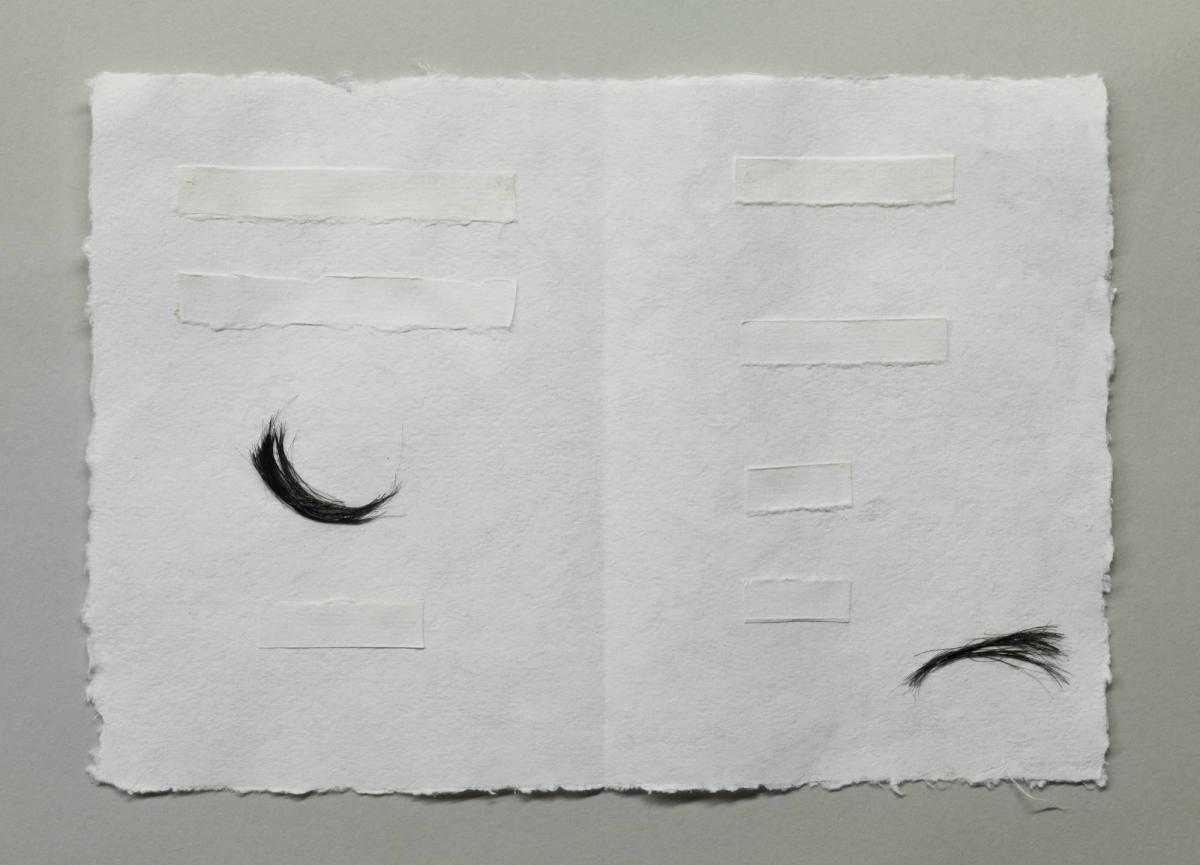
Yoko Ono, Touch Poem, 1960/2012. © Yoko Ono 2025
Touch Poem, 1960/2012
Yoko Ono
Runtime: 01:36
Annika Gunnarsson: Yoko Ono began creating her first Touch Poems in the early 1960s.
The Touch Poem displayed here was made at Moderna Museet in connection with her exhibition “Grapefruit” in 2012.
This series of works is often designed as thin books. If you look closely at the work, you will see that Yoko Ono has attached strips of thin Japanese paper to the pages as text plates.
At first glance, this could be Braille. But if you look closely, there are no words to read, neither for the eye nor for the finger.
But there is a story, an invisible story that activates your other senses. And it shows how we, as viewers, create meaning from both sensory and non-sensory information.
Yoko Ono has said: “I thought of creating poems you take into your body by touch. Poem is a way of limiting the information of the Universe by framing it. So I thought of framing poems without words for people to get it by touch.”
But what does the black hair on the paper mean? It’s Yoko Ono’s own. She took a pair of scissors, cut off a strand and incorporated it in the work. What does it signify? Is it perhaps a talisman, a protective image, or a lucky charm? Or is her hair like the tip of a brush, that might otherwise have left traces of pigment on the paper?
Yoko Ono’s conceptual works are sensitive mysteries that we would like to define. But they defy all attempts at description.